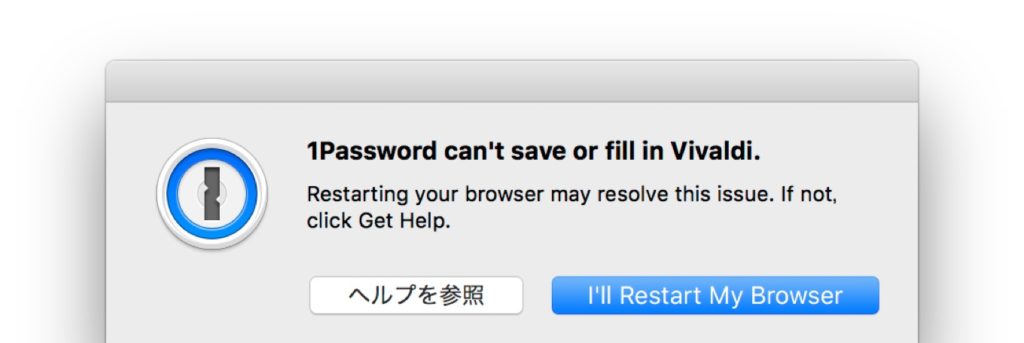In the 1password report, the majority of the passwords were, indeed, “good”. I suppose I’m concerned the label “good” in 1password is too broad to be useful for going through and editing passwords based on the report. I, personally, would consider the password in question very weak considering how many characters it has. Get 1Password in your browser. 1Password works everywhere you do, including on Linux or Chrome OS. Easily sign in to sites, use suggested passwords, and find what you need. Everything is available at your fingertips. Get to know 1Password in your browser.
1. Security & Encryption
A good password manager protects your sensitive data from unauthorized access. We compared each password manager based on its security features, such as whether it uses two-factor authentication or end-to-end encryption to prevent hackers from accessing your private information. We also tested each tool to determine how well it performs when it comes to generating secure passwords. While some password managers allow you to use easy-to-guess passwords that put your data at risk, others offer added protection by requiring you to create strong passwords.
2. App Compatibility
With so many browsers and mobile devices on the market, it’s important for a password manager to be compatible with many platforms. We tested each tool to determine if it’s compatible with some of the most common mobile and desktop platforms, including Android, iOS, Windows, and MacOS. We also tested these password managers to determine if they’re compatible with Chrome, Safari, Firefox, Edge, and other internet browsers.
1password Vivaldi Live
3. Usability and Ease of Use
We compared the password managers based on their usability and tested both tools to determine if they support biometric logins. Biometric authentication adds an extra layer of protection by requiring you to provide a fingerprint or some other unique characteristic when you attempt to log in to a website or mobile app. This form of authentication is more secure than other methods because biometric credentials are difficult to replicate. Biometric authentication enhances security, and it makes it easier to log in to your accounts.
4. Password Sharing
If you plan to purchase a password manager for your family members or employees, you’ll want a tool that makes it easy to share passwords with the people you trust. We tested each password manager to determine how easy it is to share passwords for streaming services, online banking, and other shared accounts.
5. Price
A good password manager combines the features you need with a price you can afford. We compared both tools based on their pricing levels and the number of users included in each tier.
Use apache as a HTTPS to HTTP Proxy. Ask Question Asked 8 years, 1 month ago. Active 3 years, 6 months ago. Viewed 34k times 10. I'm trying to configure Apache on Centos 6 to proxy and reverse proxy traffic to an http server of a third party provider. To make sure that the website is accessed using the protocol by default, you will need to set up an automatic redirect. If you have a control panel installed over Apache, you will need to set up redirects in the panel itself and not on the server to avoid redirect loops or incorrect module execution. Apache https to http. It's very easy to find Apache solutions for http-https redirection, but for the life of me I can't do the opposite. Apache ssl redirect https. Improve this question. Follow edited Sep 3 '12 at 6:53. 252 1 1 gold badge 3 3 silver badges 13 13 bronze badges.
Want to view a saved password in Vivaldi browser? Like other web browsers, Vivaldi can store your username and password combinations in it’s password manager. Acrobat pro 7.0 serial number. That feature allows seamless, one-click login on most websites. But using browser’s internal password manager often leads to forgotten passwords. This tutorial will teach you how to recover a password in Vivaldi browser.

Once your browser stores a username-password combination for a website, you don’t have to remember or enter the password to login to that site. But what if you forgot a password and want to login from a different browser? You’ll have two options for password recovery – a) reset the password by going to that site and b) retrieve it from your browser’s password manager. The first option is often complex for many sites. You may have to prove the ownership of that account. How about the second option? If you had allowed Vivaldi to store your password, you can easily retrieve it from the password manager. But how? Continue reading and learn how to view passwords stored by Vivaldi browser.
Steps to view saved passwords in Vivaldi:
For privacy reasons, the stored passwords are kept hidden from the browser interface. The Passwords section in Vivaldi Privacy settings page displays a list of stored logins. But it shows only the website URL and account name. There is no option to view the passwords. You can retrieve the stored password specific to an URL by following these steps:
1password Extension Vivaldi
- Open Vivaldi browser.
- Copy and paste the following in the address bar: vivaldi://chrome/settings/passwords. Then press Enter button on your keyboard.
- The Passwords settings tab will appear. You’ll see the list of all saved username-password combinations. Obviously, the passwords will be hidden. Click on the password that you want to view. A Show button will appear. Click on that button.
- You’ll see a re-authentication window asking you to enter the password of your computer (Windows user account password). Enter it and press OK.
- You’ll see the password. Copy it or write it down. Once done, don’t forget to press the Hide button next to the password.
- Press the Done button to close Password manager.
1password Vivaldi Plugin
So, that’s how we recover a lost or forgotten password from Vivaldi browser. Did it helped you?
